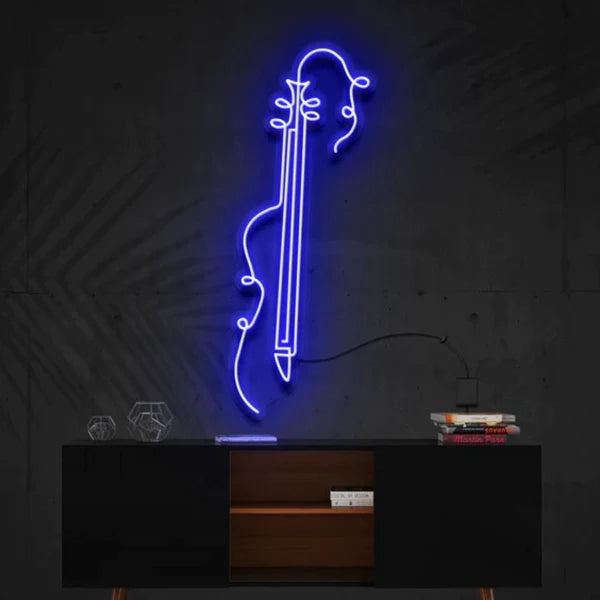Do Neon Signs Get Hot? Science Explained
Neon signs are trendy and eye-catching, but many people still ask, “Do neon signs get hot?” The quick answer: yes, a little. But not in a way that makes them unsafe. In this article, we’ll explain how much heat they produce, if it’s safe to leave them on overnight, and what you need to know before buying one.
Do Neon Signs Get Hot? (Quick Answer)
If you’ve ever admired a glowing neon sign and wondered, “Does that thing get hot?” The short answer is: yes, but not dangerously hot.
Neon signs do give off a bit of warmth because electricity flows through the gas inside their glass tubes. But unlike an old-fashioned light bulb that can burn your fingers if you touch it, a neon sign usually just feels warm to the touch, not scalding.

That means you don’t have to worry about it heating up your room, starting a fire, or becoming unsafe as long as it’s installed properly. In fact, most neon signs are designed to run for hours, even all night, without overheating.
So, if your main concern is whether a neon sign will burn you or make your wall dangerously hot, you can relax. They glow bright, but they don’t burn bright.
How Hot Do Neon Signs Get (Scientific Explanation)
Neon signs glow because of a simple but fascinating science: electricity excites gas inside a sealed glass tube.
Here’s how it works:
- The tube is filled with neon gas (or other gases, depending on the color).
- When electricity flows through the electrodes at both ends of the tube, the gas becomes “excited.”
- Excited gas atoms release energy in the form of light, which is the colorful glow you see.
But here’s the key part: whenever electricity moves through a material, some of that energy is lost as heat. In neon signs, this heat spreads into the glass tube, making it feel warm.

The important detail?
- The temperature usually stays far below dangerous levels.
- Most neon tubes only get slightly warm, much less heat than an incandescent bulb or a halogen lamp.
Think of it like this: a neon sign is closer to the warmth of a laptop charger than the heat of a stove burner. Warm, yes. Hot enough to burn? Not at all.
This balance is exactly why neon signs can shine for hours in stores, bars, or bedrooms without being a fire hazard. They glow because of physics, but they stay safe because of design.
Are Hot Neon Signs Safe to Touch?
The short answer: yes, but with a little caution.
How hot do neon signs get? When you touch the glass tube of a neon sign, it usually feels warm, not hot. Most people describe it like the warmth of a coffee mug that’s been sitting out for a few minutes, noticeable, but never painful. So if you accidentally brush against it, you won’t end up with a burn.

That said, there are two things to keep in mind:
1. The Glass Is Fragile
Neon tubes are made of glass. While the heat itself won’t hurt you, pressing too hard or bumping into the sign could break the tube. And broken glass is a much bigger risk than heat.
2. The Electrodes and Wiring
The ends of the tubes where the electrodes and power supply connect are not meant to be touched. These parts carry electricity and are usually well-insulated, but you should still avoid handling them directly.
In everyday use, neon signs are designed to be safe for people and pets in the room. That’s why they’re common in cafes, bedrooms, and even kids’ game rooms. As long as your sign is properly installed and not damaged, you can relax knowing that touching the glowing glass won’t harm you.
👉 If you want a sign that’s even cooler to the touch, LED neon alternatives are a great option. They mimic the look of neon but use modern LED strips inside flexible tubing, which stay almost room-temperature.
Can Neon Signs Be Hot If Left On Overnight?
Yes, a quality neon sign can't be hot if left on overnight. In fact, many businesses keep theirs glowing 24/7 without issues. Neon was originally designed for continuous use, which is why you still see vintage signs that have been running for decades.
 Here’s why it’s generally safe:
Here’s why it’s generally safe:
- Low Heat Output – While neon gets a little warm, it doesn’t reach the high temperatures that cause fire risks.
- Durable Design – Commercial neon signs are built to run for long hours, often far longer than the average LED light bulb.
- Stable Power Usage – Once a neon sign is turned on, it maintains a steady energy draw. Unlike older incandescent bulbs, there’s no risk of sudden overheating.
👉 Bottom line: leaving your neon sign on overnight is safe if it’s in good condition. But just like any electrical appliance, a quick check-up every now and then keeps things worry-free.
Does Heat Affect Neon Sign Lifespan?
A little bit, but not as much as you might think.
Neon signs are designed to run for years, even decades, and the gentle heat they produce is usually not what wears them down. In fact, a well-made neon sign can last 8–15 years or more with normal use.
Here’s what actually affects lifespan more than heat:
- Power Supply Quality – A stable, well-built transformer keeps the sign healthy. Cheap or faulty power supplies can shorten its life.
- Environment – Dust, moisture, and extreme temperatures (very hot or very cold) put more stress on the tubes than the heat they naturally generate.
- Handling – Glass is fragile. Knocks, bumps, or poor installation cause far more damage than warmth ever will.
👉 So if you’re worried that your neon sign will “burn itself out” from heat, you can relax. It’s not the warmth that shortens its life; it’s external factors and care.
FAQs: Do Neon Signs Get Hot?
- Do neon signs make a room hotter?
No. The warmth they give off is minimal and won’t change the temperature of your room.
- Can neon signs overheat if left on for too long?
Not under normal conditions. They’re built for long hours of use, and overheating is extremely rare if the sign is in good shape.
- Why do some neon signs feel warmer than others?
It depends on the size of the sign, the gas used, and the power supply. Larger signs or those using certain gases may feel a little warmer, but still safe.
- Are neon signs energy-efficient compared to other lights?
Neon signs are more efficient than old incandescent bulbs, but less efficient than LED signs. The extra energy they use is what creates the slight warmth.
- Can I put a neon sign near other electronics?
Yes, as long as there’s a bit of space for airflow. Neon signs don’t emit enough heat to harm nearby devices.
Final Conclusion
So, do neon signs get hot? Yes, but only slightly.
The gentle warmth you feel on the glass is simply a byproduct of how neon signs work. It’s never intense enough to burn your skin, heat up a room, or pose a fire risk. Compared to many traditional light sources, neon is actually cooler and safer for long-term use.
The real takeaway is this: neon signs are built to glow safely for years. With proper installation, occasional check-ups, and a little care, you can enjoy the iconic glow of neon without worrying about overheating.
And if you want the same look with zero warmth at all, LED neon signs are always an option. But for those who love the authentic vibe, a traditional neon sign is both safe and reliable as long as you treat it well.


